Preface: In the ore crushing industry, the cone crusher is the core equipment, and its stable operation is directly related to the efficiency and continuity of the entire production process. In order to ensure that the cone crusher maintains a good working condition for a long time, prolongs its service life and reduces the probability of failure, scientific and standardized repair and maintenance work is an indispensable key link. This article will deeply analyze the key points of cone crusher repair and maintenance, and provide comprehensive, practical and instructive content for relevant practitioners.
A. Daily maintenance of cone crusher
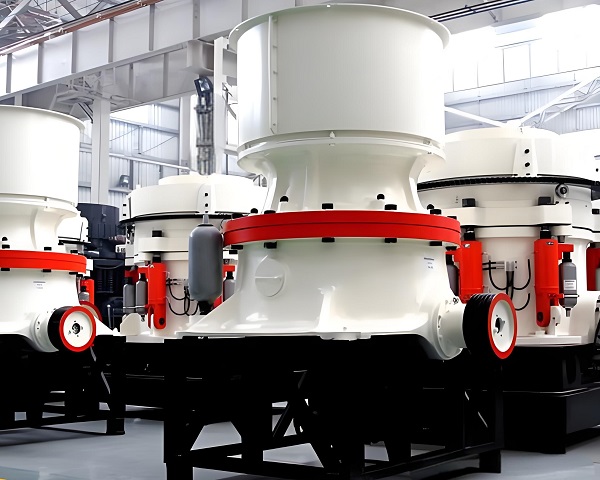
Cone Crusher
1. Equipment cleaning
Maintaining the cleanliness of the cone crusher is the basis of daily maintenance work. During the operation of the equipment, a large amount of dust, debris and other impurities are very easy to adhere to the surface of the equipment and internal parts. These impurities not only damage the appearance of the equipment, but also may invade the inside of the equipment, accelerate the wear of parts, and even cause equipment failure. Therefore, it is necessary to use a clean rag or compressed air every day to clean the equipment in all directions, especially focusing on the feed port, discharge port, transmission parts and exposed parts of the lubrication system of the crusher. During the cleaning process, be careful to avoid damaging sensitive parts such as sensors and seals.
4. Lubrication system inspection
The lubrication system plays a vital role in the normal operation of the cone crusher. In daily work, it is necessary to regularly check whether the oil level of the lubrication system is within the normal range and whether the oil quality is good. Once the oil level is found to be too low, it is necessary to add lubricating oil that meets the equipment requirements in time; if the oil quality is turbid, emulsified or produces odor and other undesirable conditions, the lubricating oil should be replaced immediately. At the same time, it is also necessary to carefully check whether there is leakage in the lubrication pipeline. If there is leakage, the damaged pipeline must be repaired or replaced in time. In addition, the filter of the lubrication system should be cleaned regularly to ensure the cleanliness of the lubricating oil and prevent impurities from entering the lubrication system and causing damage to the equipment.
4. Bolt tightening inspection
Due to the vibration and impact of the cone crusher during operation, the connecting bolts between the various components of the equipment are prone to loosening. Loose bolts will not only affect the stability of the equipment, but also cause relative displacement between components, aggravate the wear of the equipment, and may even cause serious safety accidents. Therefore, all connecting bolts of the equipment should be checked every day, especially the bolts of the key parts such as the frame, transmission parts, eccentric sleeve, and crushing cone of the crusher. For loose bolts, they must be tightened according to the specified torque requirements to ensure that the equipment is firmly and reliably connected.
B. Regular maintenance of cone crusher
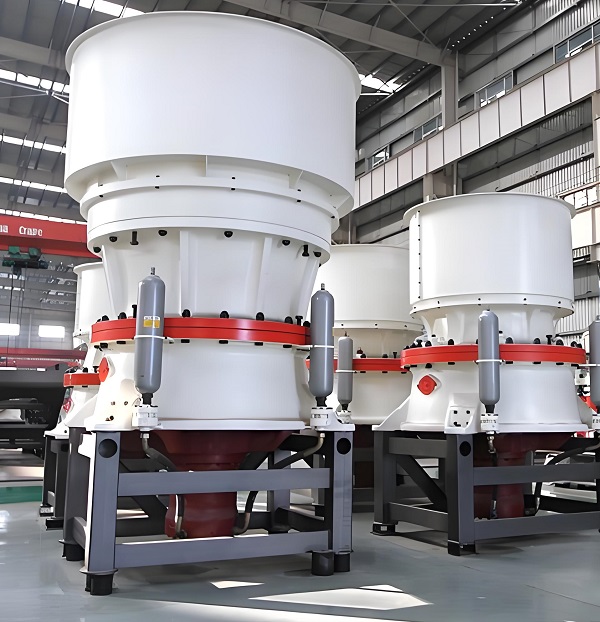
Cone Crusher
1. Weekly maintenance
A more comprehensive inspection of the cone crusher should be carried out every week. In addition to repeating the work content of daily maintenance, it is also necessary to focus on checking the transmission parts of the equipment, such as whether the tension of the belt is appropriate, the wear condition of the chain, and whether the connection of the coupling is stable. If the belt is too loose or too tight, it will reduce the transmission efficiency of the equipment and may even cause the belt to slip or break; if the chain is severely worn, it will jump teeth and affect the normal operation of the equipment; if the coupling is not firmly connected, it will produce greater vibration and noise. It is also necessary to check the crushing chamber of the equipment and check the wear of the crushing wall and the mortar wall. If the wear exceeds the specified range, it should be replaced in time.
2. Monthly maintenance
Monthly maintenance work should be more in-depth and meticulous. On the basis of completing the weekly maintenance tasks, the lubrication system of the equipment needs to be fully inspected and maintained. This includes cleaning the lubrication pump, replacing the lubricating oil filter, and checking whether the various valves of the lubrication system can work normally. At the same time, the electrical system of the equipment should be checked to see if the wires are damaged or aged, whether the terminals are loose, whether the electrical components are operating normally, etc. In addition, it is necessary to check whether the foundation of the equipment is firm, whether there are any problems such as sinking and cracking. If problems are found in the foundation, reinforcement measures should be taken in time to deal with them.
3. Quarterly maintenance
The cone crusher should be fully overhauled every quarter. On the basis of completing the monthly maintenance content, the main components of the equipment should be disassembled and inspected. For example, check the degree of wear of the eccentric sleeve, whether the clearance of the bowl bearing is normal, and whether the main shaft is bent and deformed. For severely worn parts, they should be replaced in time. At the same time, the crushing chamber of the equipment should be fully cleaned to remove the materials and debris accumulated in the chamber. In addition, it is necessary to test the various performance indicators of the equipment, such as crushing capacity and product particle size, and adjust and optimize the equipment according to the test results.
4. Annual maintenance
The annual maintenance is the most important maintenance of the cone crusher, which is usually carried out when the equipment is down for a long time. Annual maintenance not only covers all the contents of quarterly maintenance, but also requires comprehensive maintenance and upkeep of the equipment. This includes repainting the appearance of the equipment to prevent rust and corrosion; comprehensive inspection and evaluation of all parts of the equipment, and timely replacement of parts that have reached their service life or have potential safety hazards; comprehensive commissioning and optimization of the equipment's transmission system, lubrication system, electrical system, etc. to ensure that the equipment can operate normally and efficiently in the new year.
C. Replacement of wearing parts of cone crusher
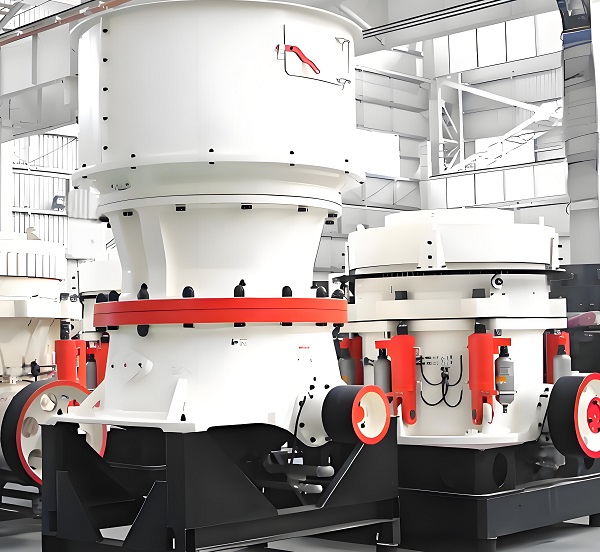
Cone Crusher
1. Crushing wall and mortar wall
The crushing wall and mortar wall are one of the main wearing parts of the cone crusher. They are in direct contact with the material during the crushing process, and are subjected to huge impact and friction, so they wear faster. When the wear of the crushing wall and mortar wall reaches a certain extent, it will change the shape of the crushing chamber, thereby affecting the crushing effect and product particle size. Generally speaking, when the wear of the crushing wall and mortar wall reaches 20% - 30% of the original thickness, it is necessary to consider replacement. When replacing the crushing wall and the mortar wall, you should choose products with reliable quality and install them strictly in accordance with the installation requirements of the equipment to ensure installation accuracy and firmness.
2. Liner
The liner of the cone crusher is mainly installed on the inner wall of the crushing chamber and other parts that are susceptible to wear. Its function is to protect the equipment body. The wear of the liner is closely related to the nature and hardness of the material and the operating conditions of the equipment. Under normal circumstances, the service life of the liner is 3-6 months. When the liner is severely worn, cracked or detached, it should be replaced in time. When replacing the liner, pay attention to the material and specifications of the liner should be consistent with the original equipment. When installing, ensure that the liner fits tightly with the equipment body and is firmly fixed.
3. Belts and chains
Belts and chains are important components of the cone crusher transmission system. During long-term operation, their performance will deteriorate due to wear, stretching and other reasons. The wear of the belt is mainly manifested in surface wear, cracking and aging. When the belt shows obvious signs of wear or looseness, it should be replaced in time. The wear of the chain is mainly manifested in the elongation of the chain links, the wear of the rollers, etc. When the elongation of the chain exceeds the specified range or the rollers are severely worn, they also need to be replaced. When replacing belts and chains, choose products of the same model as the original ones, install them according to the correct installation method, adjust the tension, and ensure the normal operation of the transmission system.
4. Bearings
The bearing is one of the most important parts in the cone crusher. It bears the radial and axial loads of the equipment and plays a key role in the operation stability and accuracy of the equipment. The service life of the bearing is closely related to the operating conditions, lubrication conditions and maintenance of the equipment. Under normal circumstances, the service life of the cone crusher bearing is 1-2 years. When the bearing is hot, has abnormal noise, vibration, etc., it may indicate that the bearing is damaged and needs to be replaced in time. When replacing the bearing, choose a reliable product and install it strictly according to the installation process to ensure that the installation accuracy and clearance of the bearing meet the requirements. At the same time, pay attention to the good lubrication of the bearing, check the lubrication condition regularly, and replenish or replace the lubricating oil in time.
D. Fault diagnosis and troubleshooting of cone crusher
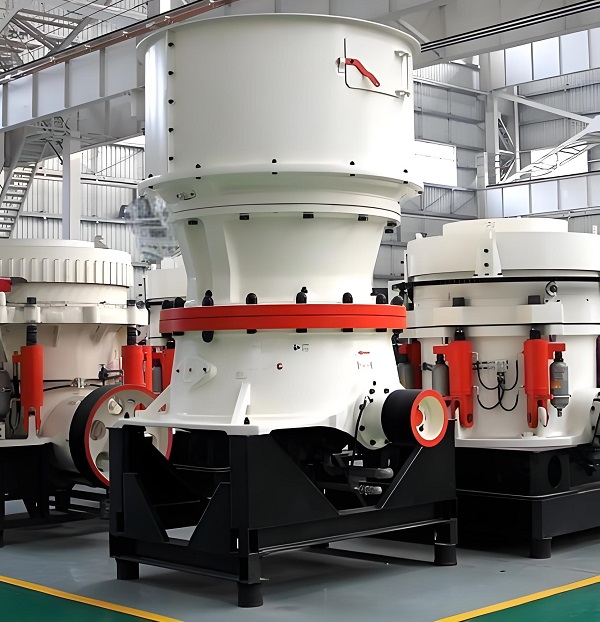
Cone Crusher
1. Excessive vibration of equipment
Excessive vibration of equipment is one of the common faults of cone crusher. There may be various reasons for this fault, such as the foundation of the crusher is not firm, the connecting bolts of the equipment are loose, the eccentric sleeve is seriously worn, the main shaft is bent and deformed, and there are foreign objects in the crushing chamber. When diagnosing the fault, first check whether the foundation of the crusher is firm and whether the connecting bolts are loose. If there are any problems, they should be reinforced and tightened in time. Then check the wear of the eccentric sleeve, main shaft and other parts. If there are severely worn or deformed parts, they should be replaced in time. Finally, check whether there are foreign objects in the crushing chamber. If there are foreign objects, they should be cleaned up in time.
2. Uneven discharge particle size
Uneven discharge particle size is also one of the common faults of cone crusher. The causes of this fault may be uneven wear of the crushing wall and the rolling mortar wall, uneven feeding, improper adjustment of the discharge port, etc. When diagnosing the fault, first check the wear of the crushing wall and the rolling mortar wall. If the wear is uneven, they should be replaced in time. Then check whether the feeding system is normal to ensure uniform and stable feeding. Finally, check whether the adjustment of the discharge port is appropriate, and adjust it according to the actual situation so that the discharge particle size meets the requirements.
3. Decreased equipment output
The decline in equipment output may be caused by many reasons, such as severe wear of the crushing chamber of the crusher, insufficient feeding, decreased transmission efficiency of the equipment, changes in the nature of the material, etc. When diagnosing the fault, first check the wear of the crushing chamber. If the wear is serious, the crushing wall and the mortar wall should be replaced in time. Then check whether the feeding system is normal to ensure sufficient feeding. At the same time, check the transmission system of the equipment, such as whether the belt is slipping, whether the chain is loose, etc. If there is a problem, it should be adjusted and repaired in time. In addition, it should also be considered whether the nature of the material has changed, such as increased hardness, increased humidity, etc., and adjust the operating parameters of the equipment according to the changes in the nature of the material.
4. Lubrication system failure
Lubrication system failure may cause increased wear of equipment parts and even cause equipment failure. Common causes of lubrication system failure include insufficient lubricating oil, deterioration of oil quality, blockage of lubrication pipelines, and failure of lubrication pumps. When diagnosing a fault, first check the oil level and quality of the lubricating oil. If the oil level is insufficient, add it in time, and if the oil quality deteriorates, replace it in time. Then check whether the lubrication pipeline is blocked. If there is a blockage, clean it in time. Finally, check whether the lubrication pump is working properly. If there is a fault, repair or replace it in time.
E. Maintenance and maintenance precautions for cone crushers
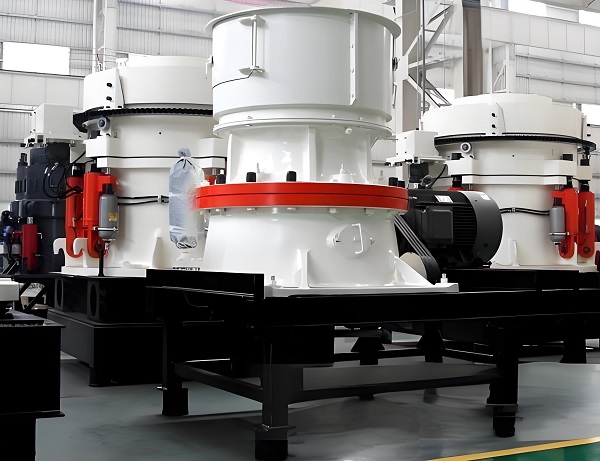
Cone Crusher
1. Safety first
When repairing and maintaining cone crushers, safety must always be put first. Maintenance personnel should cut off the power supply of the equipment before operation, and hang a warning sign of "No closing, someone is working" to prevent others from operating it incorrectly. When repairing inside the equipment, ensure that the equipment is in a stable state to prevent the equipment from starting suddenly or collapsing. At the same time, maintenance personnel should wear personal protective equipment, such as safety helmets, safety shoes, gloves, etc., to avoid accidents.
2. Use original accessories
When replacing parts of cone crushers, original accessories should be used as much as possible. The quality and performance of original accessories have been strictly tested and verified by equipment manufacturers, and can perfectly match the equipment to ensure the normal operation and service life of the equipment. Using non-original accessories may lead to decreased equipment performance, increased failure rate, and even safety accidents.
3. Strictly follow the operating procedures
When repairing and maintaining the equipment, maintenance personnel must strictly follow the operating procedures and maintenance manuals of the equipment. The operating procedures and maintenance manuals specify in detail the repair and maintenance steps, methods, precautions, and technical requirements of the equipment. Strictly following these requirements can ensure the quality and effectiveness of the repair and maintenance work.
4. Establish equipment maintenance files
In order to better manage the repair and maintenance of the cone crusher, an equipment maintenance file should be established. The maintenance file should record the maintenance time, maintenance content, replaced parts, maintenance personnel and other information of the equipment. Through the analysis and summary of the maintenance files, problems and potential failure hazards of the equipment can be discovered in time, providing a basis for preventive maintenance of the equipment, and also helping to improve the technical level and maintenance efficiency of maintenance personnel.
PS: The maintenance and maintenance of the cone crusher is a systematic and complex project, which requires maintenance personnel to have solid professional knowledge and rich practical experience. Through scientific and reasonable daily maintenance, regular inspection, replacement of wearing parts, fault diagnosis and troubleshooting, etc., we can ensure that the cone crusher maintains a good working condition for a long time, improve the reliability and production efficiency of the equipment, and create greater value for the development of the enterprise. In the process of repair and maintenance, we must always keep in mind the principle of safety first, strictly follow the operating procedures, use original accessories, and establish a complete equipment maintenance file to provide a strong guarantee for the stable operation of the equipment.
Save Time! Get A Detailed Quotation Quickly.
